This post will guide you through a variety of these resilient blooms, ensuring that your garden can thrive even in the presence of hungry herbivores.
Lavender (Lavandula spp.)
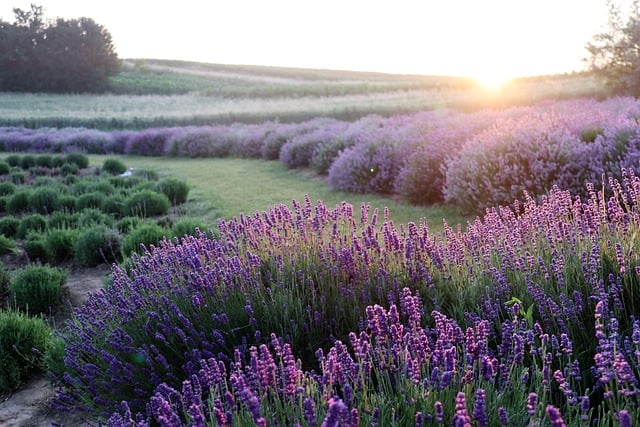
Lavender is not only a beloved staple in many gardens for its intoxicating fragrance and purple blooms, but it also boasts deer resistance. This Mediterranean herb thrives in sunny, well-drained locations, making it a popular choice for drought-tolerant gardens. The aromatic oils in lavender are unappealing to deer, discouraging them from munching on the foliage. Additionally, lavender attracts beneficial pollinators, such as bees and butterflies, adding life and vibrancy to your garden. Whether planted in neat rows or as part of a cottage garden arrangement, its versatility and beauty shine through.
Bee Balm (Monarda spp.)
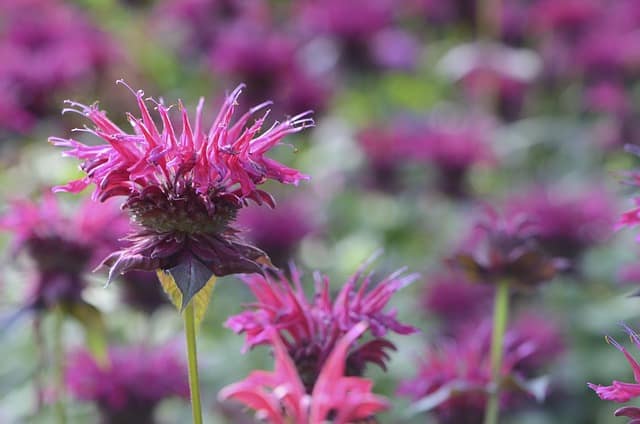
Bee Balm is a delightful perennial that’s not just for bees—it’s also a deer-resistant superstar. Known for its striking, tubular flowers in hues of red, pink, purple, or white, Bee Balm thrives in full sun to partial shade and prefers moist, rich soil. Its minty aroma and unique texture deter deer while attracting pollinators and hummingbirds. Beyond aesthetics, Bee Balm has medicinal properties and can be used in herbal teas, adding a functional element to your garden.
Russian Sage (Perovskia atriplicifolia)
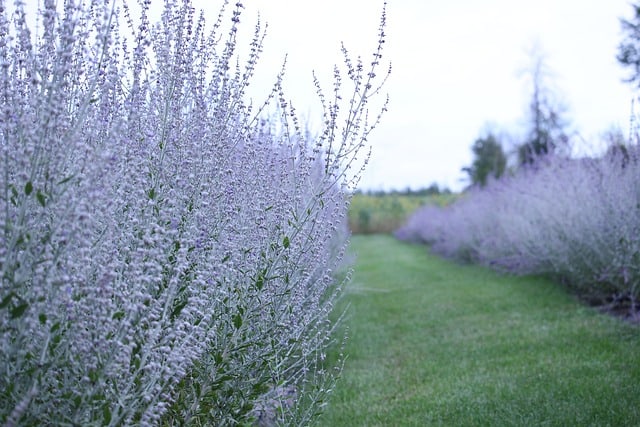
Russian Sage stands out for its striking silver foliage and tall, spiky blue flowers that can brighten any garden setting. This drought-tolerant perennial thrives in sunny conditions, showing resilience in poor soils. Deer hesitate to feast on Russian Sage thanks to its aromatic leaves and stems, ensuring that your garden remains intact even during peak deer activity. Its sturdy structure also provides height and texture, making it perfect for borders or as a backdrop for other colorful blooms.
Rosemary (Rosmarinus officinalis)
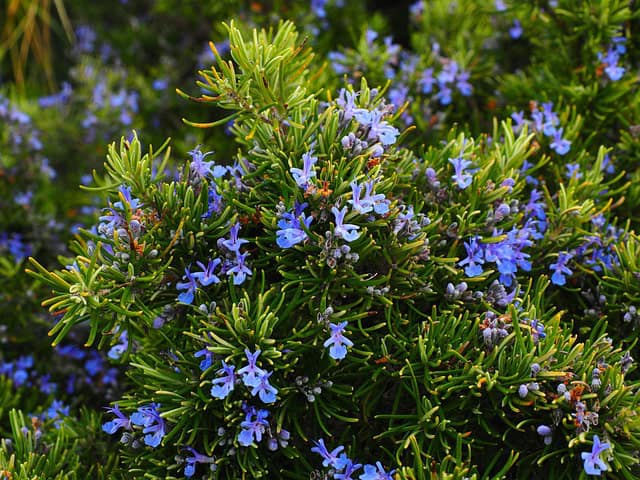
While often associated with culinary delights, rosemary is also a stunning flowering shrub that is deer-resistant. With its evergreen foliage and small, blue flowers, rosemary thrives in sunny, well-drained locations. The strong scent of this herb repels deer, while its versatility allows for numerous uses in your kitchen. Additionally, rosemary can be grown in containers or as a hedge, adding both beauty and practicality to your outdoor space.
Catmint (Nepeta spp.)
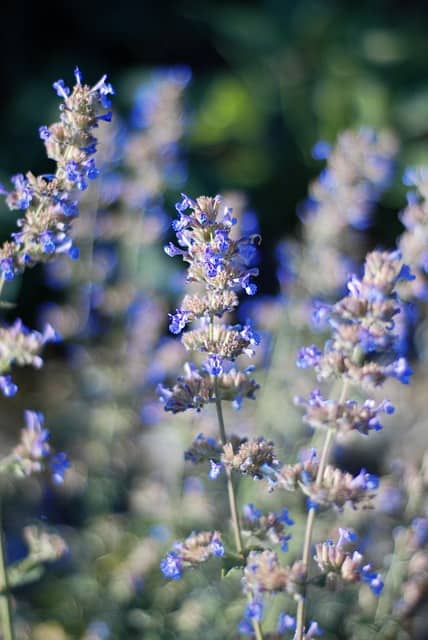
Catmint, or Nepeta, enchants with its lavender-blue flowers and aromatic foliage. Not only does it bring a lovely splash of color to the garden, but it is also highly resistant to deer. Catmint prefers well-drained soil and grows well in sunny locations, forming a bushy mound adorned with long-lasting blooms. This charming perennial attracts pollinators and is known for its ability to thrive even under moderate neglect, making it a low-maintenance option for busy gardeners.
Salvia (Salvia spp.)
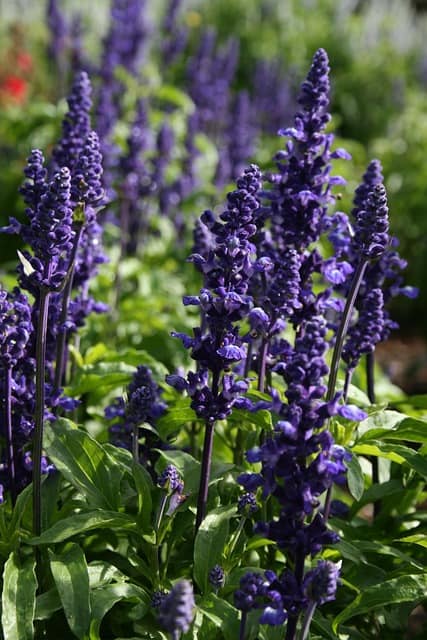
Salvia comes in a variety of types and colors, making it a flexible choice for any flower garden. These hardy perennials are cherished for their long, vibrant spikes of flowers that bloom throughout the summer. Their aromatic foliage is unappealing to deer, ensuring that they remain untouched. Salvia thrives in sunny locations and well-drained soil, and it serves as a magnet for bees, butterflies, and other pollinators, truly enlivening your garden.
Daffodils (Narcissus spp.)
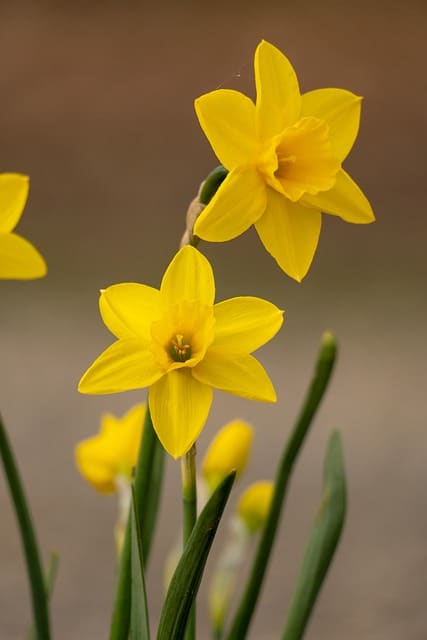
Bursting forth in early spring, daffodils herald the warmer months with their cheerful, sunny blooms. What many may not know is that these beloved springtime flowers are highly resistant to deer. The bulb contains toxic compounds that make them unpalatable to both deer and rodents. Plant daffodils in well-drained soil in sunny to partially shaded locations for a stunning early summer display that you can enjoy without worrying about deer interference.
Foxglove (Digitalis spp.)
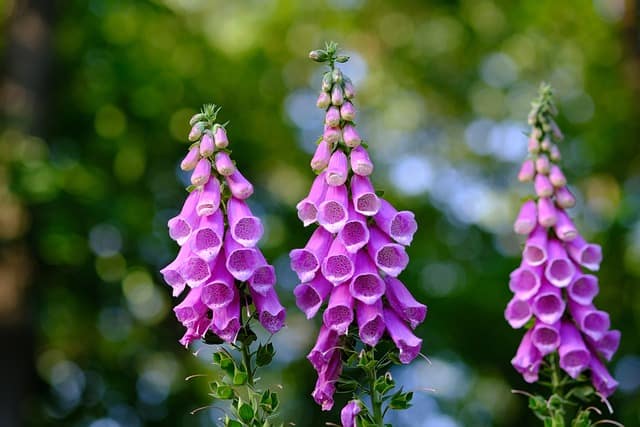
Foxgloves are known for their remarkable height and stunning bell-shaped flowers that create a dramatic effect in summer gardens. Available in various colors, these flowers do well in partially shaded areas and can tolerate a range of soil conditions. Fortunately for gardeners worried about deer, foxglove tends to be left alone due to its toxic properties. However, it is crucial to handle these plants with care, as they are poisonous if ingested.
Lily of the Valley (Convallaria majalis)
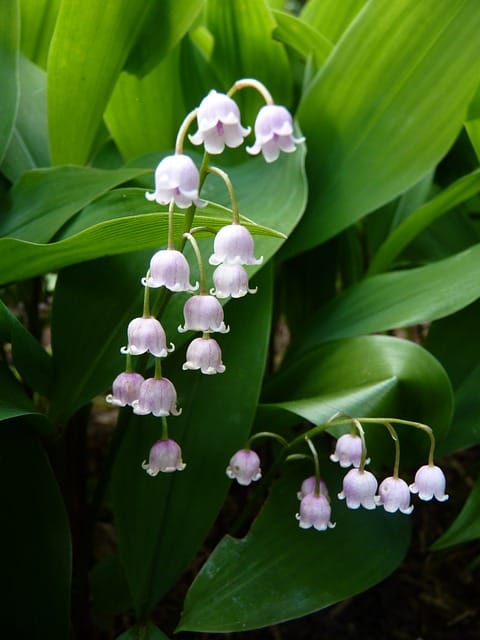
Famed for its sweet scent and delicate bell-shaped flowers, Lily of the Valley adds a touch of elegance to any garden. This perennial thrives in shaded areas and spreads through rhizomes, making it a great ground cover option. While its beauty is unquestionable, it’s also a deer-resistant choice due to its toxic properties. Plant it along borders or under trees for a lush display that thrives in lower light conditions while keeping deer at bay.
Bleeding Heart (Dicentra spp.)
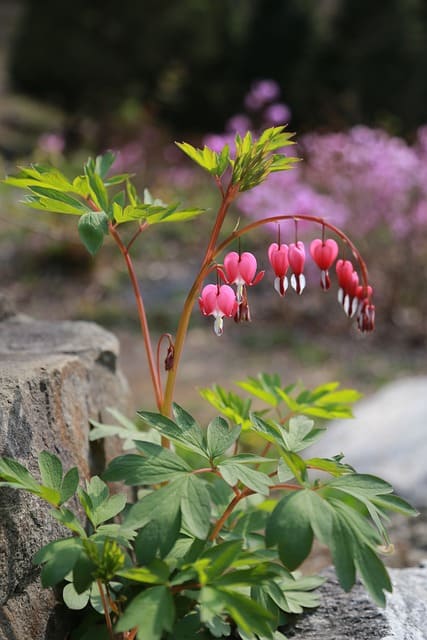
Bleeding Heart is known for its unique, heart-shaped blooms that dangle delicately on arching stems. These perennials prefer partial shade and moist, well-drained soil, making them ideal for woodland gardens. Their toxicity deters deer, allowing your garden to flourish without fear of being munched on by foraging hoofed creatures. The ethereal beauty of Bleeding Heart is a wonderful addition to any summer garden, providing a soft, romantic touch.
Monkshood (Aconitum spp.)
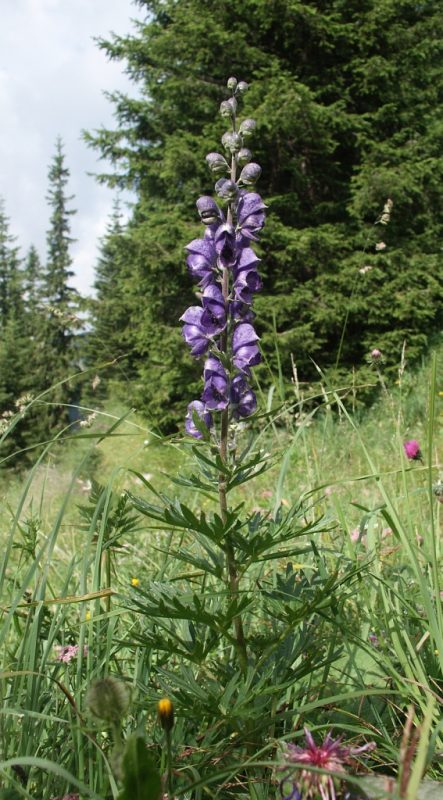
Monkshood, with its regal spires of hooded flowers, is a striking and unusual choice for summer gardens. It thrives in moist, rich soil and prefers partial shade, thriving in woodland or cottage garden settings. While its beauty is captivating, it’s important to note that Monkshood is toxic, making it unappealing to deer. These striking plants serve as a dramatic focal point, but caution is necessary when handling them.
Larkspur (Delphinium spp.)
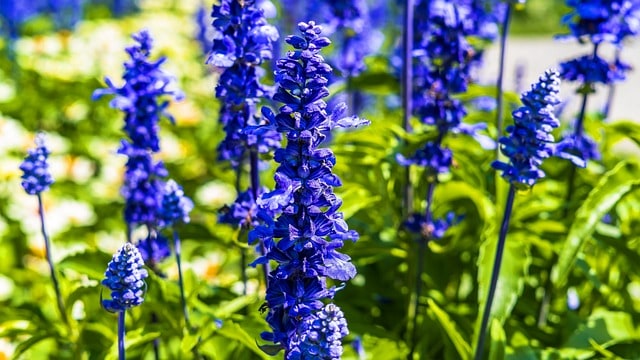
Larkspur enchants with its tall, densely packed spikes of flowers that create vertical interest in the summer garden. These annuals and perennials come in various colors and are ideal for sunny borders. Thankfully, their toxicity makes them deer-resistant. Larkspur also attracts bees and butterflies, enhancing the biodiversity of your garden and ensuring that it remains lively throughout the blooming season.
Coneflower (Echinacea spp.)
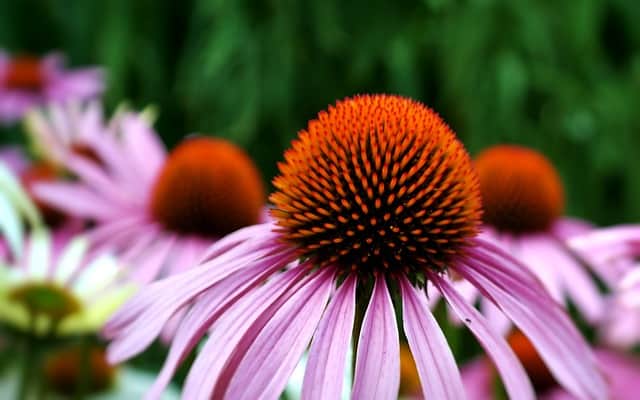
Known for its daisy-like shape and vibrant purple hues, Coneflower is a standby in summer gardens. This North American native thrives in full sun and is drought-tolerant, making it ideal for various soil types. The tough, spiky centers and strong smell are deterrents for deer, while the flowers attract butterflies and other pollinators. Coneflower is not only a beautiful addition but also a resilient choice that adds color to your summer landscape.
Black-eyed Susan (Rudbeckia hirta)
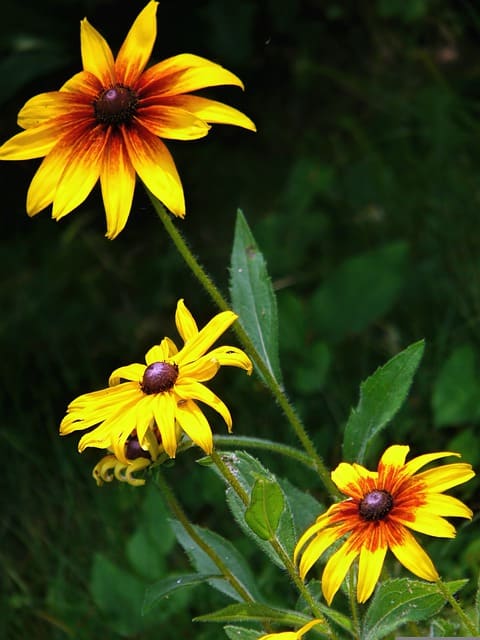
Black-eyed Susans are loved for their cheerful yellow petals and dark centers, creating a classic summer look in gardens. These hardy perennials thrive in full sun and tolerate poor soil conditions, making them a versatile choice. Their fragrance and rough texture make them unappealing to deer. Plant them in groups for a stunning visual effect that promises to light up your garden and attract numerous pollinators.
Globe Thistle (Echinops spp.)
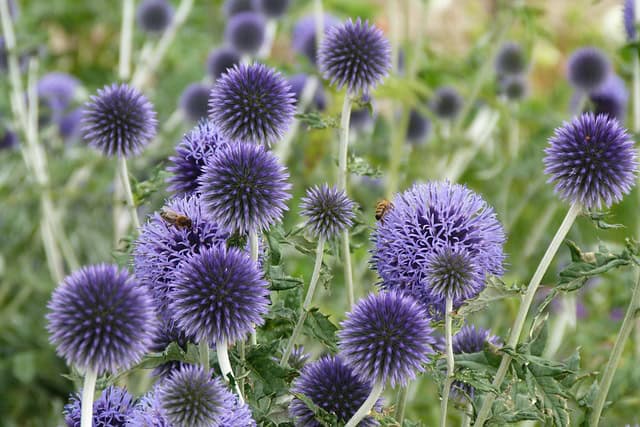
A unique flowering perennial, the Globe Thistle stands out with its spherical blue flowers perched atop sturdy stems. This drought-tolerant plant thrives in full sun and well-drained soils, creating striking architectural interest in your garden. Deer tend to avoid this plant thanks to its prickly foliage, making it an excellent choice for a deer-resistant garden. Additionally, Globe Thistle attracts bees and butterflies, enhancing the ecological value of your outdoor space.
Poppy (Papaver spp.)
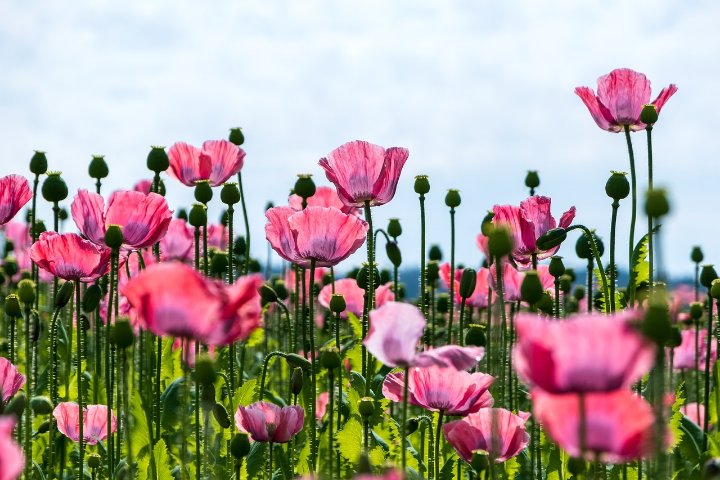
Poppies are celebrated for their bold blossoms that sway lightly in the summer breeze. These annuals and perennials come in various colors and can thrive in a range of soil conditions. Most importantly, their taste is unappealing to deer, allowing you to plant them with ease. The vibrant colors and unique structure of poppies can attract countless pollinators, contributing to the summer garden’s liveliness.
Snapdragon (Antirrhinum spp.)
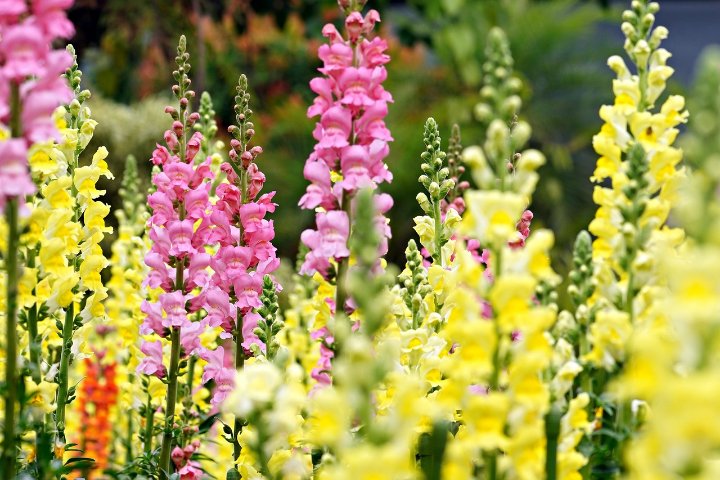
Snapdragons add a whimsical element to gardens with their unique, dragon-like flower clusters. These charming annuals prefer sunny spots and well-drained soil, blooming through the summer months. Their tough texture and slightly bitter taste protect them from deer while making them a sought-after option for adding height and charm to your floral displays. Plus, they are known to attract hummingbirds, which will further enhance the vibrancy of your garden.
Dusty Miller (Senecio cineraria)
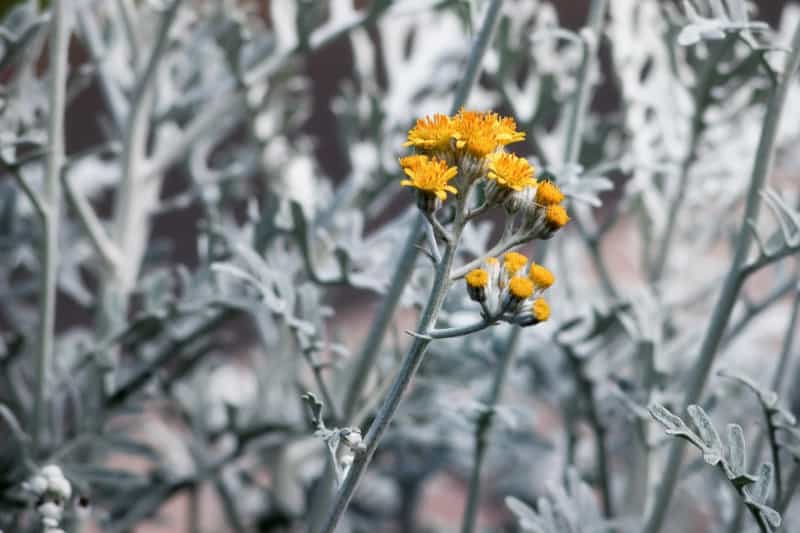
Dusty Miller serves as an excellent companion plant in summer gardens, renowned for its silvery foliage that contrasts beautifully with colorful flowers. Its tough texture and strong aroma deter deer, ensuring that your garden remains intact. Dusty Miller thrives in sunny spots and well-drained soil, making it an adaptable choice. This hardy annual provides a stunning backdrop for more vibrant blooms, enhancing the overall appeal of your garden.
Marigolds (Tagetes spp.)
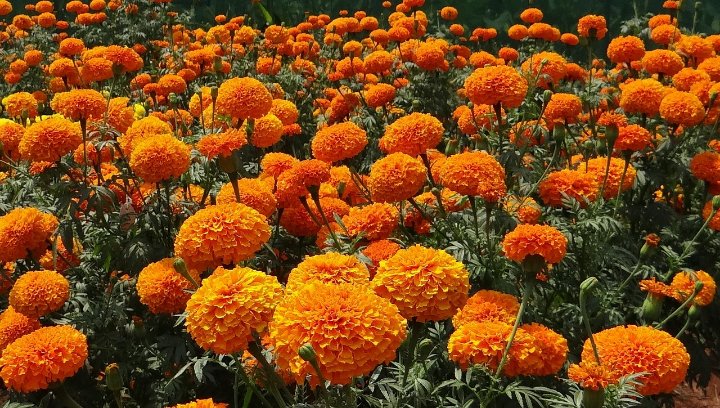
Marigolds are often planted for their vibrant orange and yellow blooms, but they offer more than just visual appeal. These cheerful flowers deter deer and other pests due to their strong scent, making them a clever choice for keeping your garden safe. Marigolds prefer full sun and well-drained soil, and they thrive throughout the summer, providing color and interest to your garden beds.
Zinnias (Zinnia spp.)
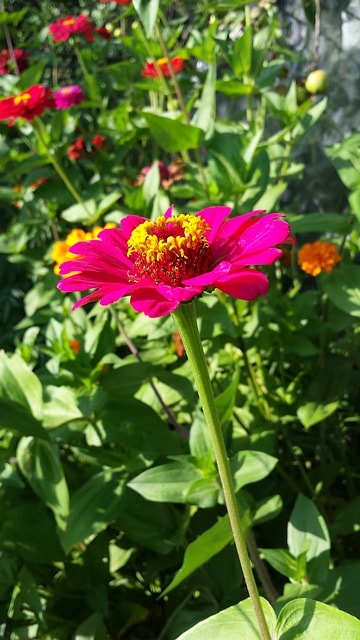
Zinnias are beloved for their long-lasting blooms and vivid colors, offering a delightful display in any garden setting. This adaptable annual thrives in full sun, tolerating drought and a variety of soil conditions. Their rough foliage generally dissuades deer from indulging, making them an ideal choice for a colorful and comprehensive summer garden. Zinnias attract butterflies, creating a lively ecosystem and enhancing the visual spectacle during summer months.
Peonies (Paeonia spp.)
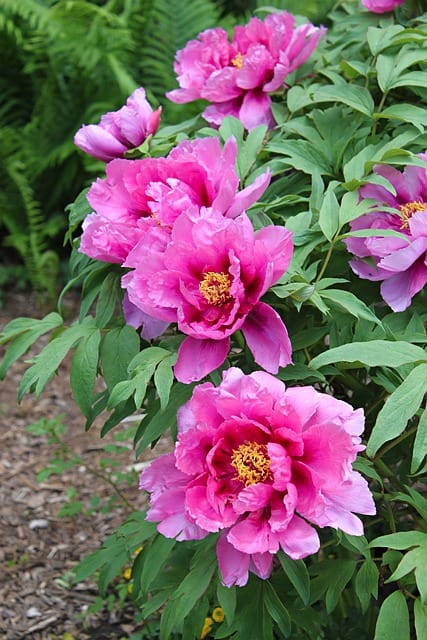
Peonies are cherished for their lush, fragrant blooms that signal the arrival of summer. Available in various colors and forms, these perennials thrive in well-drained soils and sunny locations. Deer typically avoid peonies due to their strong scent and tough, hairy foliage. Planting peonies not only ensures that your garden boasts stunning displays but also enhances its overall resilience against deer.
Yarrow (Achillea spp.)
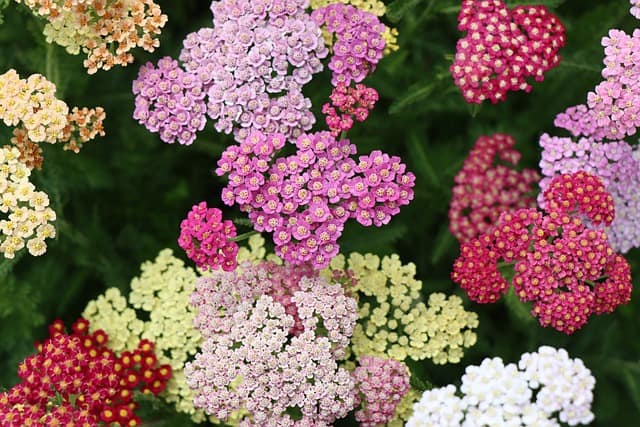
Yarrow is an exceptional perennial that is both resilient and beneficial to the garden. Known for its feathery leaves and clusters of tiny flowers, yarrow thrives in various soil types and prefers well-drained conditions. Its strong scent, coupled with its rough texture, helps shield it from deer. Moreover, yarrow is a magnet for pollinators and can be used in herbal remedies, adding both beauty and functionality to your garden.
Coreopsis (Coreopsis spp.)
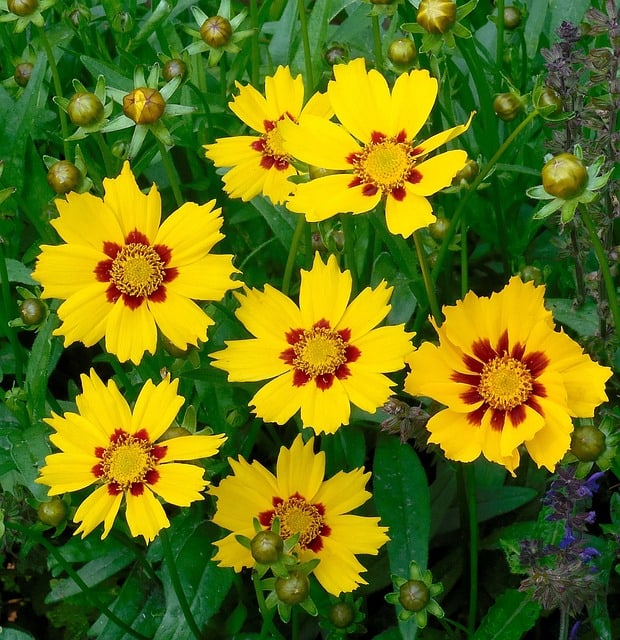
Coreopsis, known for its cheery daisy-like flowers, is a resilient and low-maintenance perennial. It thrives in full sun and well-drained soil, producing long-lasting blooms that attract butterflies. Its tough texture and unpalatable foliage mean that deer are unlikely to dine on it, making Coreopsis a perfect choice for those looking to deter these grazers while beautifying their gardens.
Gaillardia (Blanket Flower)

Gaillardia, or Blanket Flower, captivates gardeners with its bold, fiery colors and long bloom time through the summer. This drought-tolerant perennial thrives in full sun and tolerates poor soil, making it an easy-care option. Its tough foliage discourages deer, while the vibrant flowers provide a lively focal point in your garden. As a bonus, Gaillardia attracts butterflies, contributing to a dynamic and lively garden space.
Hellebores (Helleborus spp.)
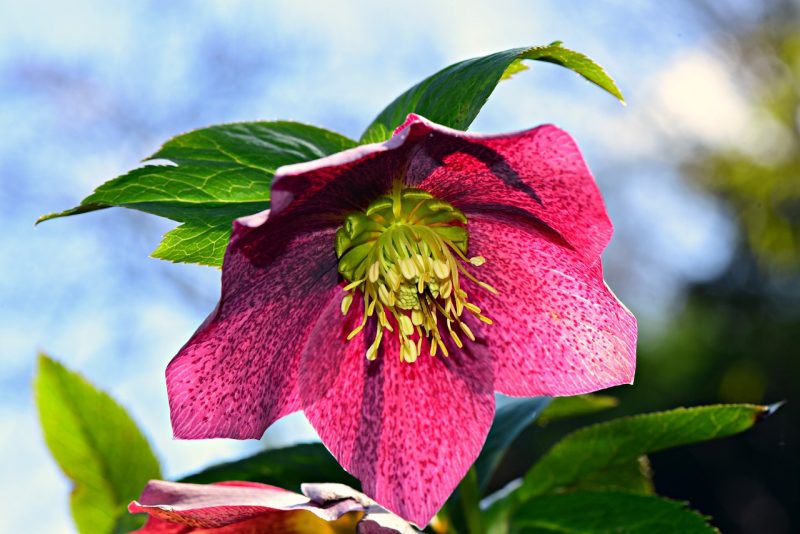
Though often associated with winter gardens, Hellebores can provide early summer color and texture. These resilient perennials thrive in partial shade and appreciate rich, well-drained soils. Hellebores are typically unappealing to deer thanks to their toxic properties. Combining these hardy plants with summer blooms offers visual interest and ensures that your garden stays vibrant and healthy.
Columbine (Aquilegia spp.)
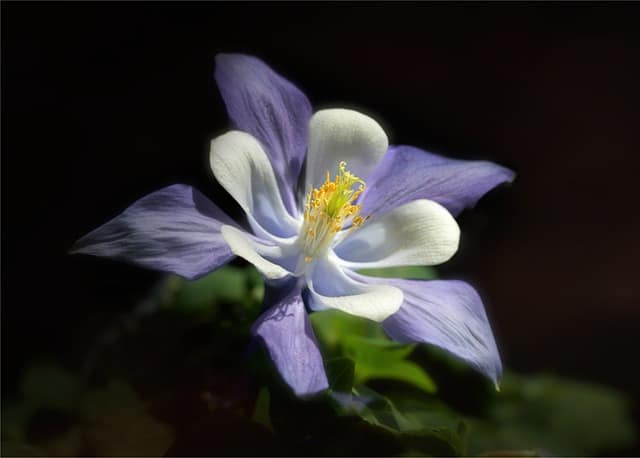
Columbine is a playful perennial celebrated for its unique flower shape and vibrant colors. This charming plant thrives in a range of conditions, including partial shade. Deer tend to leave this floral beauty alone due to its bitter taste and toxic properties, making it a wonderful addition to any garden. Columbia’s delicate blooms attract hummingbirds, adding a magical touch to your summer garden.
Astilbe (Astilbe spp.)
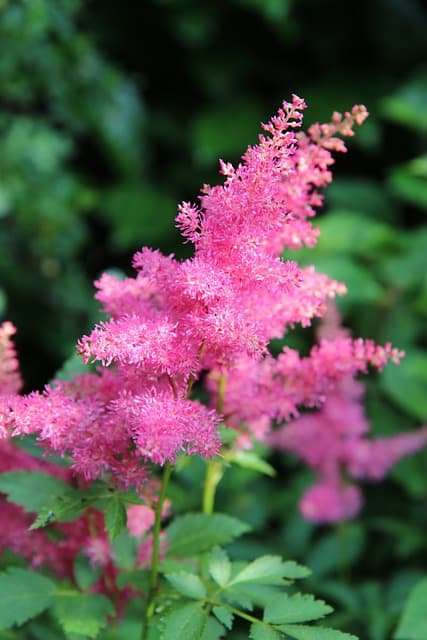
Astilbe brightens shadier garden corners with its feathery flower plumes and lush foliage. Preferring moist soil and partial shade, Astilbe is perfect for woodland gardens. Its strong texture and slightly unpleasant taste deter deer, while its striking blooms provide a beautiful contrast to many sun-loving plants. This perennial is not only stunning but also tolerant of various moisture levels, making it a versatile option.
Japanese Anemone (Anemone hupehensis)
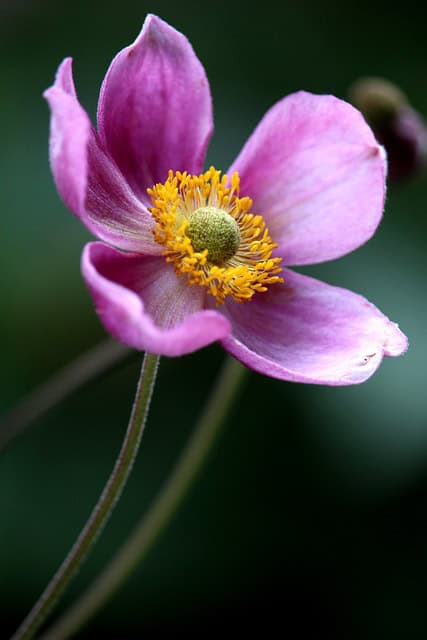
Sonorous and charming, the Japanese Anemone delights gardeners with its late-summer blooms, providing a splash of color when many other plants have started to fade. This perennial thrives in part to full shade and well-drained soil. Its toxicity deters deer, while its graceful flowers attract pollinators. Incorporate Japanese Anemone for a late burst of color and diversity in your garden.
Ferns (Various species)
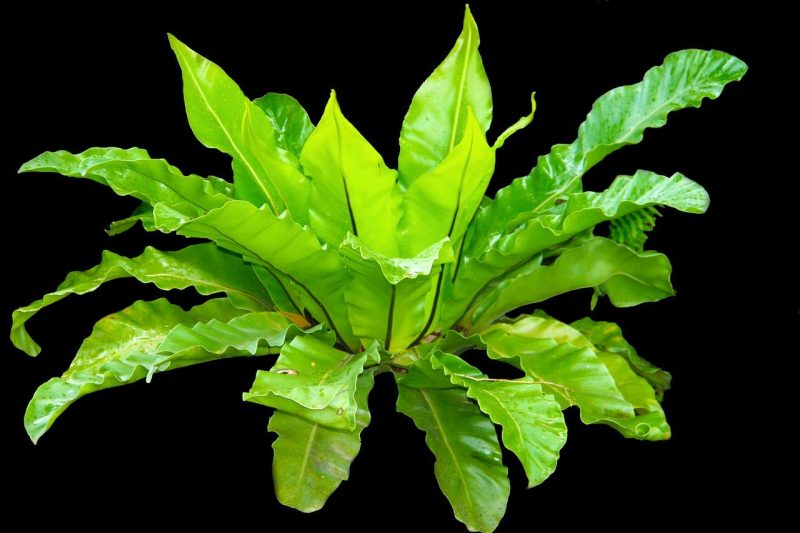
While technically not flowering plants, ferns deserve a mention for their unique ability to fill in shady spots while remaining highly deer-resistant. Their tough texture and unpalatable taste deter deer, ensuring your garden remains untouched. Various fern species adapt well to different soil conditions, thriving in moist, shaded areas. Incorporating ferns adds an alluring greenery that contrasts beautifully with flowering plants.
Clematis (Clematis spp.)
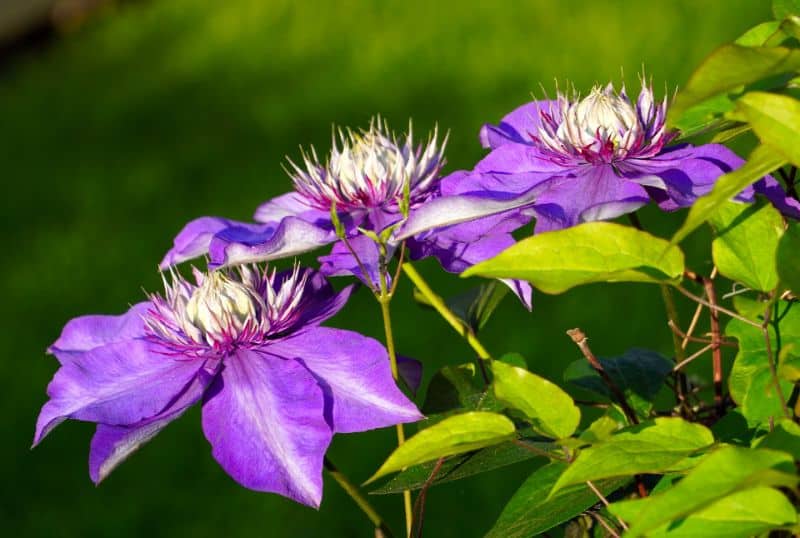
Clematis vines are renowned for their stunning, large blooms that can adorn trellises, fences, and arbors. With a variety of species offering diverse colors and shapes, Clematis can transform your garden into a beautiful tapestry of flowers. While their blooms are enticing, most deer tend to avoid consuming these vines. They thrive in sunny spots and can offer vertical interest while being easy to maintain.
Trumpet Vine (Campsis radicans)
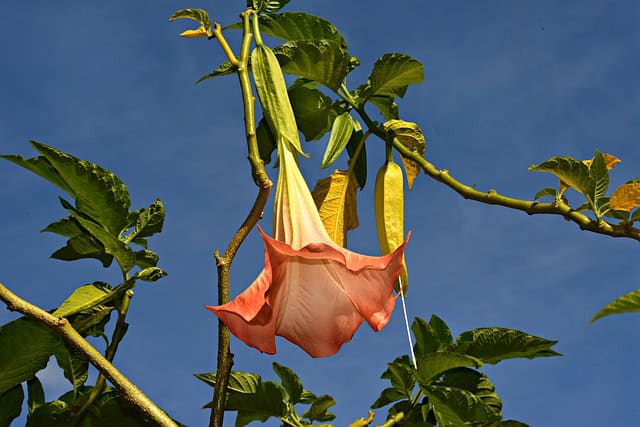
Offering a spectacular show of tubular orange-red flowers, the Trumpet Vine attracts hummingbirds and adds a tropical vibe to your garden. This hardy perennial thrives in full sun and well-drained soil. Deer tend to steer clear of the leathery foliage and rough texture of the plant. The vigorous growth of Trumpet Vine means it can quickly cover trellises or fences, making it an ideal choice for those looking for rapid coverage.
Honeysuckle (Lonicera spp.)
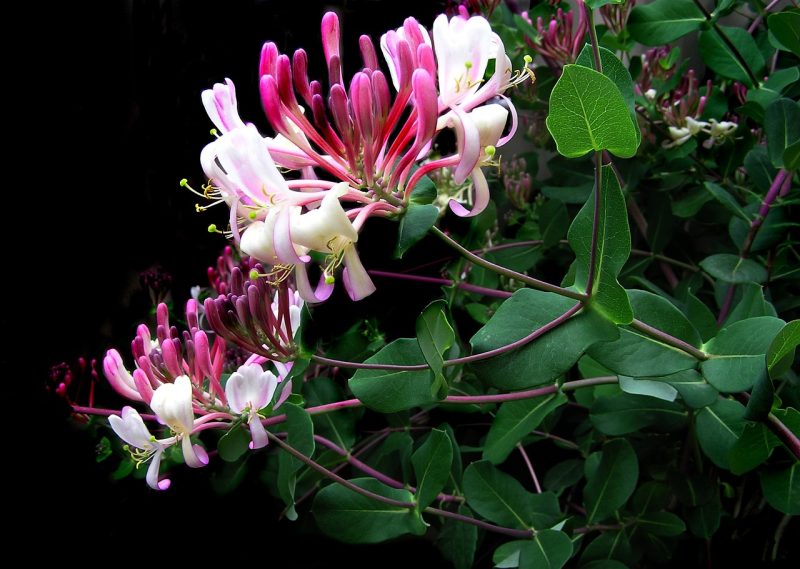
Not only does Honeysuckle offer beautiful blooms and delightful fragrances, but it also has a deer-resistant quality that makes it a worthy addition to your garden. This perennial climber can thrive in various conditions, whether in full sun or partial shade. The sugary nectar of Honeysuckle attracts pollinators, providing an inviting environment for bees and butterflies while ensuring a bloom-rich summer landscape.
Wisteria (Wisteria spp.)
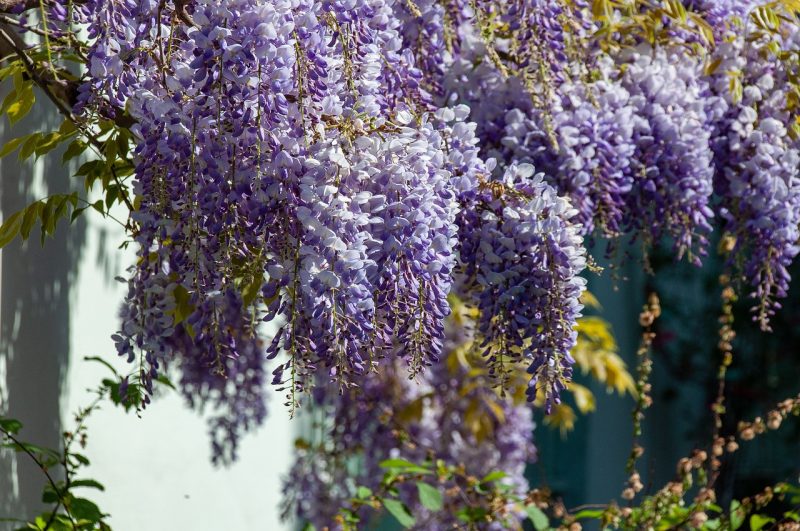
Wisteria is famous for its enchanting trailing clusters of purple or white flowers, creating breathtaking floral cascades. Having a preference for sunny locations, this climbing vine can quickly cover structures, making an impressive focal point. The tough texture combined with its pungent fragrance makes Wisteria less appealing to deer. If you’re looking for a show-stopping addition to your garden, Wisteria fits the bill beautifully.





